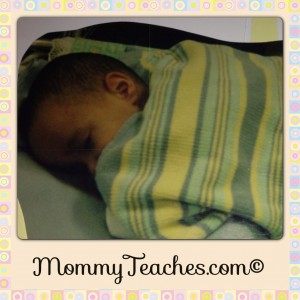This weblink is to prove how important proper care is. As an educator since the age of twenty-one, I have been introduced to all types of contagious illnesses. I found the most susceptible stage of my career was when I was a Director of a Preschool in Coney Island, Brooklyn. We had various cases of stomach viruses, ring-worm, and lice but nothing that placed the children in harms way and nothing that escalated into anything uncontrollable. As a Director and child care provider you are informed of these minor health risks before being placed in a classroom to care for children. Getting sick is just part of working with kids!
Respiratory Syncytial Virus (commonly called RSV) is a respiratory illness that is contagious and can be caused by a virus. This virus breeds more commonly during Fall and Winter and it causes serious illness in infants, young children, and even the elderly due to their weakened immune system. It’s spread through droplets from the nose and throat when people cough and sneeze without covering themselves properly. It can also be contagious through dry respiratory secretions as well as sheets and linens.
Prior to children registering for child care programs there is a health procedure that must be followed according to The New Department of Health and Mental Hygiene. All children must visit their pediatrician for a check up and be up to date to with their immunizations. A child will not be able to be registered without an up to date medical form.
Despite these precautions as well as the practice of general sanitation and facility maintenance, RSV spreads through day care centers uncontrollably sometimes. Here are the tips that lead to effective prevention within the childcare environment that I was the leader for:
- The children were given several lessons on hygiene. We can’t simply tell our children to be healthy and clean and not model it to them or express the importance of it. Why not teach them about being sanitary and preventing illness? Although they are young, children love to learn and this can be a learning experience for them. We would create a theme based on hygiene and being sanitary. The children were better able to implement being sanitary in their daily routine once they knew how they could be cleaner to prevent certain illnesses.
- Many children eat lunch in the preschool setting so they can be provided with plastic utensils that must be discarded after they eat. If providers choose to use metal utensils, they should be soaked and sanitized after every use. The same goes for the cups they drink out of. Along with clean dishes during meals, handwashing importance was always stressed to the children.
- Prior to the children taking a nap, their cots would be sanitized. The cot should be sprayed with lysol or wiped down daily. Every Friday, weather permitting we would take all one hundred cots outside to our playground and wash them individually with hot water and soap. They would be laid out in the sun and placed to dry so that they would be fresh for the Monday of the week. They were also stored standing up against the wall alongside one another not on top of each other. The room in which they were stored was also sanitized.
- Parents would be sent home reminders and bedding would be placed in bags to be sent home with children on Fridays. All bedding must be washed and returned in another bag stating that they had been washed. The child would not be allowed to sleep on a cot without bedding and children were prohibited from sharing bedding as this was unsanitary. A premium bed will be a great help for those who need restful nights, and to get more information, explore this helpful site.
- If a child came to school with cold-like symptoms, they were monitored closely. The parent was called and asked about the symptoms immediately. If they were reported as allergies, the parents were asked to take the child to the doctor to confirm they were not contagious and return back with a doctor’s note clearing the child of anything contagious.
- All toys were sanitized on a daily basis with bleach-free products that meet the regulations of sanitizing. Bleach is to be avoided due to any child with asthma or lingering chemical toxins. The same precautions were taken with changing tables, bathrooms and wherever the children played whether indoors or outdoors.
All of these tips and personal experiences as a preschool leader prepared me to take these same precautions with my own children at home. My children know why we do things and it has become a part of their routine. A lot of these illnesses can be prevented if we just educate our children as well as our parents to ensure we reduce our exposure to the RSV virus to stay healthy year-round. At Etobicoke child care, children not only receive a quality education or play interactive games but also get trained with healthy practices to keep illness at bay.
Disclosure- Although I was compensated for this post all views, opinion, and thoughts are my own.


[…] RSV is the highest leading cause of hospitalizations in the United States during a child’s precious first year of life. It has lead to 125,000 hospitalizations and sadly up to 400 deaths each year. […]